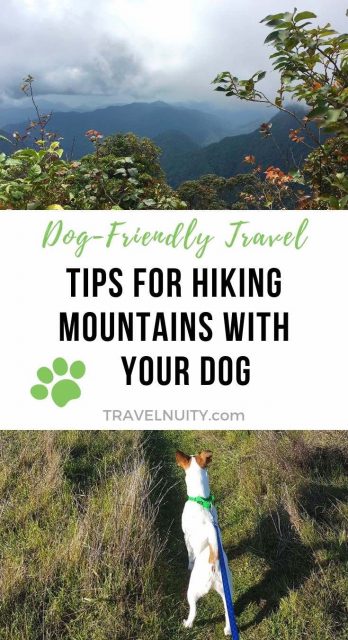This is a guest post from Pete Silvester of Summits.com
If you like hiking up mountains, and your best friend is your dog, you’re probably wondering if and how you can take them climbing up your next summit with you.
So we at Summits.com – a new website for climbing mountains in Asia – are here to help fellow dog lovers with a few tips to enjoying hikes up mountains with your dog with the help of the Interim CEO’s dog, Goblin.
As a hyperactive Jack Russell, Goblin is constantly looking for ways to release some of that potential energy from his little turkey drumstick legs, so taking walks in the mountains is his favourite thing to do.
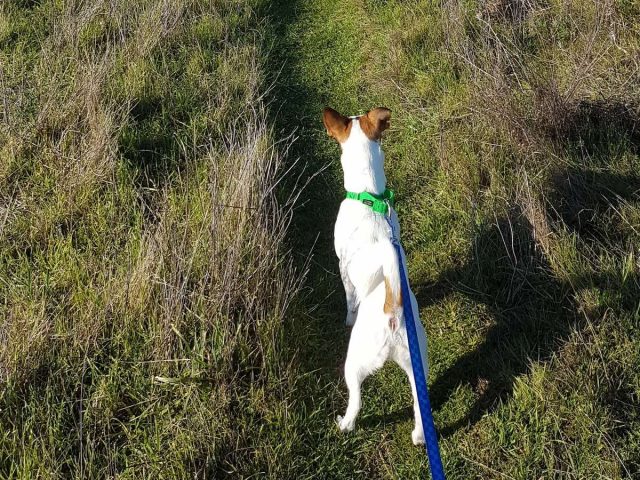
Although we at Summits.com focus on mountains in Southeast Asia, which is where Goblin now lives, he has climbed mountains in winter in the Pacific Northwest of the USA, and in summer in the Middle East too. So here are our tips for walking dogs in mountains across the globe.
1. Find Out Your Dog’s Limits
For Goblin, it’s about 5km in hilly terrain. That’s 5km of human walking, and at least 10km of him running squiggles around the path. Then he stops, stares at me, and wants to jump up on my shoulders (which I happily let him do because it’s cute).
So I have to select mountain trails of about that distance or less, which is generally moderate day hikes of perhaps a couple of hours.
Each dog is different, so you should ask your vet what a healthy version of your dog should be able to do. Your dog might just not be up for climbing mountains at all.
Is your dog a big ball of squish? Does he have itsy bitsy legs that whir away beneath him when he walks beside you? Is he blind as a post? Arthritic? Hip dysplasia? Let the poor fella be.
But like humans, dogs can increase their stamina through training. Fatsos can get slim again, and that can mean they can last longer on the trail. Of course, regular exercise and a healthy diet is for every dog, but it’s also a good starting point for getting your dog in shape for a climb.
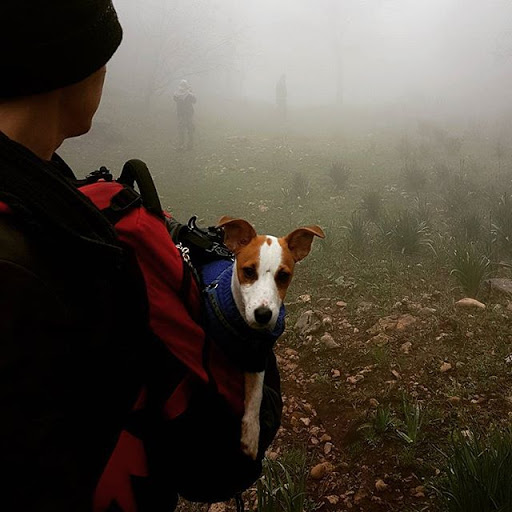
Also, whilst some dogs are born with coats equipping them well to tolerate chilly climates that one may experience atop high peaks, some shorter-haired dogs like Goblin will get cold.
You can get doggie clothing for this, but they’re never as good a proper wintry coat. And having a wintry coat will be a hinderance at the lower reaches of tropical mountains.
Or, the challenge for other peaks is more about the terrain. Peaks such as Bukit Tabur in Malaysia don’t have such daunting heights, but the forests and rocky terrain can present quite the challenge for a dog, and the limestone rock can be tough on the feet for a difficult climb.
If you do wind up with your dog in difficult terrain, you should lead the way if you can. Training your dog to temper his enthusiasm by following your lead will help your dog to avoid the more dangerous parts of the trail and not rush into some misplaced steps.
2. Trail Training Your Dog
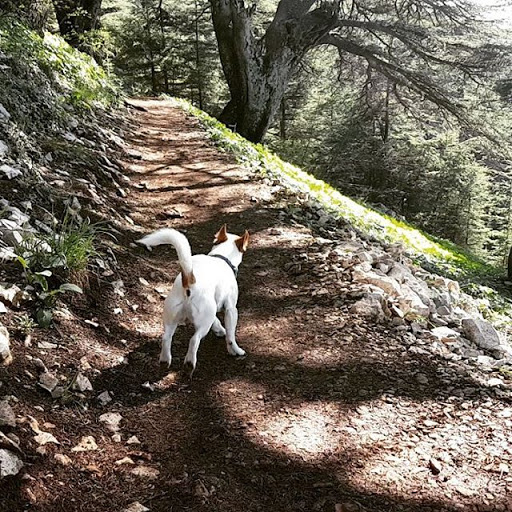
But more importantly, if your four-legger isn’t the most obedient little fella, you might need to start training him that way too.
Can you dog come when you call, stop when you say so, and remain calm around other animals (even wild ones)? Ideally, you shouldn’t need a leash to make sure he doesn’t stray or cause any trouble for himself or you.
If, like Goblin, you’re dog’s enthusiasm levels just can’t handle a leash on a mountain trail when there are chicanes to speed through, you are going to have to be very confident that they will come when called. Although Goblin is too much of a coward to really run away when hiking, I know it will only take a confident squirrel or rabbit and I could be looking for him for hours.
As scary as a disappearing dog may be on a normal walk, this is especially dangerous when climbing peaks. At least there are now GPS pet trackers available which help track them down when they stray.
Otherwise, put a leash on that puppy. Most trails we’ve come across in the USA that allow dogs actually require it.
3. Avoid Dangerous Trails
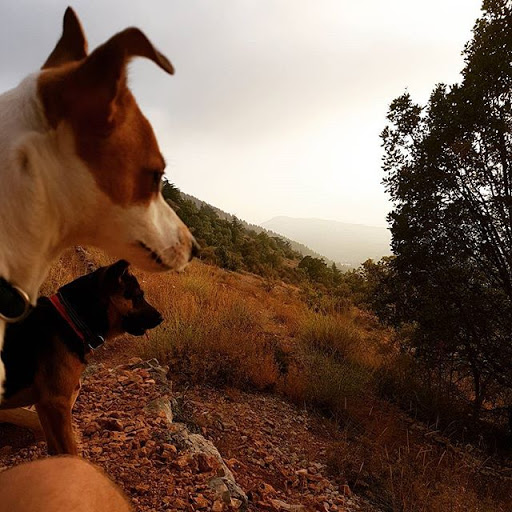
Meera the Mutt, who recently climbed a 7,000m high peak in Nepal, shows us that dogs are surprisingly resilient and shore-footed. But it’s important to do your research about what dangers you’re exposing your pal to before you go!
The first that comes to mind is predators. Obviously, you don’t want your dog getting attacked, but you also don’t want your dog attracting an attack either. Most places in the world have land-based predators, so you need to know how likely you are to encounter one, and what to do if so.
You might also consider how your dog reacts to other domesticated animals you might encounter. Goblin is completely freaked out by horses, for example, so Indonesia’s Mount Bromo, with its horseback riding tours, may be out of the question for him.
Also, some mountain trails can present surprisingly difficult terrain for dogs. Overall, dogs’ paws prefer earthen paths as opposed to rocky ones with sharp stones. Loose, sharp rocks and shale can cause cuts, which means some of the many volcanic peaks of Southeast Asia are to be avoided.
Generally, Goblin has been fine in snow and ice, but it can become harder, more abrasive, and even sharp in certain conditions, so it’s something you need to watch out for. I also find that metal boardwalks on some more built out trails are especially uncomfortable for dog’s paws.
Obviously, avoid Puncak Jaya (Carstensz Pyramid) type climbs with rope ladders or any form of rock climbing or abseiling involved. If you know you’re going to face such paths at any point of the hike, be sure to bring waterproof hiking shoes for your dog to protect its paws.
Try to pick routes with at least some shade every now and then. In Southeast Asia, where peaks are often volcanic, toxic/strong gases takes peaks like Mount Semeru and Ijen Crater off the doggy hikes list.
4. Pack Well
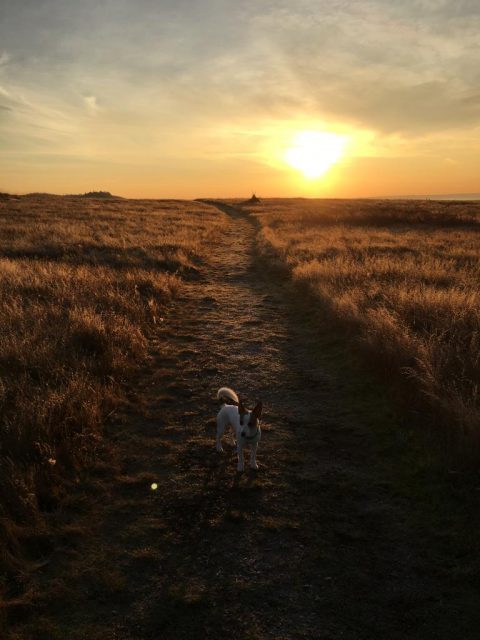
Just as much as we need to carry our own first aid kit when hiking, it’s just as important that you make sure you’re prepared if your dog needs any help along the way. Your pup’s first aid kit should include some disinfectant, tweezers, and a sock to cover paw injuries until you get back to normal ground.
A few other items to add to your doggy packing list include:
- Food and water
- Harness/collar and leash
- A doggy raincoat
- Doggy hiking shoes with a good grip (if your dog tolerates it)
Having all this packed in your bags will protect your climbing amateur pup from hypothermia during rainy weather and sore paws on rough terrain.
About the Author

Pete Silvester is CEO of Summits.com, the first website devoted to mountaineering in Southeast Asia, and has spent about seven years traveling, studying, launching start-ups and climbing the odd mountain in the region. He can be contacted at [email protected].
Join the Summits.com mailing list for more climbing destinations, or visit the World of Summits account on Twitter, Facebook, Instagram and Pinterest.
You May Also Like
Inspired? Pin this to your Pinterest board!
